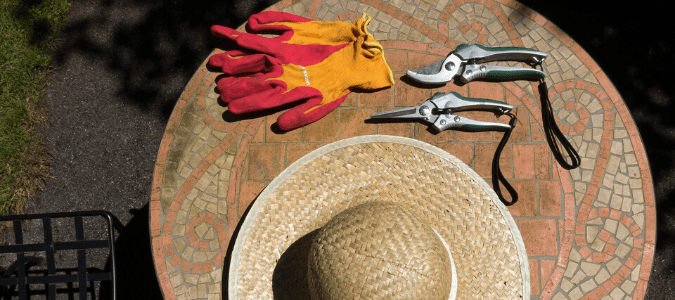
As the temperature starts to warm up and the first signs of spring appear, homeowners quickly turn their attention to their yards, as many grasses and plants go dormant during the cooler months of the year. When considering your landscaping, spring cleanup can consist of:
- Clearing all debris, including dead leaves, fallen branches, pet waste and other clutter.
- Planning your mowing, fertilizing and watering schedule, or signing up for a lawn service to take over these regular tasks for you.
- Dethatching any dead roots or leaves in your lawn that may prevent your newly growing plants from getting the nutrients they need.
- Pruning trees and shrubs to encourage healthy growth.
- Take a blower to patios and decks to get all dust and other particles off of your commonly used spaces
- Giving your lawn and landscaping some breathing room by planning to aerate.
- Re-edging your flower beds.
- Beginning a regular watering and weeding routine to encourage new growth of the plants you want in your yard.
By carving out time to create a yard maintenance plan, you’ll be setting yourself up for a healthy landscape going into the spring months.
While we’ve covered the basics, there’s additional work that goes into maintaining a beautiful lawn and yard. Keep reading to learn how to create a lawn care schedule, avoid spring weeds, aerate your soil and other advice from the pros.
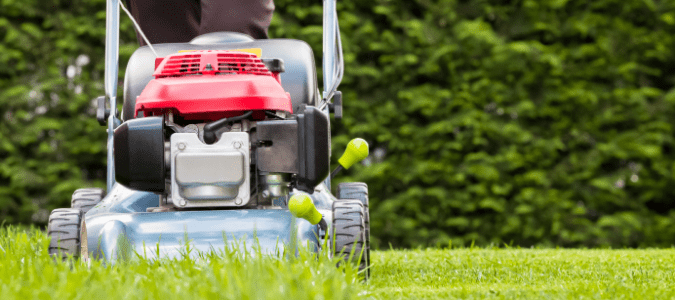
Getting A Jump On Your Spring Lawn Care Schedule
For warm-season grasses, including Bermuda grass and St. Augustine grass, the work begins just before temperatures are predicted to reach 55 degrees or higher on a consistent basis. Luckily, if you plan your spring lawn care schedule early, the steps are fairly straightforward.
Identify What’s Growing In Your Yard
Come February, your first task is identifying what’s currently growing in your yard, if you don’t already know, and removing what you don’t want. If you’re not sure what kind of vegetation you have (or what you should have), clip a bit and take it into your local nursery for help with identification. You can also get in touch with a lawn care specialist to come out and take a look. Once you have confirmed your grass and plant types, you’ll need to assess the current state of your grass.
Evaluate Your Lawn
Early and honest evaluation of your lawn’s current condition is the best way to map out your route to the perfect turf come summer. And, you might as well do it in February when identifying the flora in your yard. Some of the decisions you’ll want to make include:
- Identifying weeds, insect pests and lawn conditions in your outdoor spaces
- Deciding what stays and what goes this growing season
- Determining what is required to achieve the thickest, greenest turf you can
- Thinking about how you’d like to manage your lawn care maintenance
Many homeowners call in a lawn care professional to perform this in-depth evaluation and provide recommendations to help them meet their goals.
Dethatch First
Thatch refers to mounds of grass material that have grown into existing plant matter before it has a chance to decompose. When there is excess thatch, air, water and other nutrients can’t reach the soil. If your thatch is more than three-quarters of an inch thick, you need to dethatch.
If you have too much thatch, new grass will root in the thatch and not your soil. In addition, thatch can create a barrier preventing fertilizers and pesticides from penetrating the soil. To make matters worse, this layer often harbors disease-causing bacteria, fungus and insects between it and the actual ground layer. During your initial lawn evaluation, if you determine you need extensive dethatching, you’ll want to do that prior to your pre-emergent application in order to prevent disturbance to that pre-emergent barrier layer.
Apply Pre-Emergent To Prevent Spring Weeds
Most spring pre-emergents require an application before the soil reaches 65 degrees. Cross-check the appropriate pre-emergents’ application recommendations with historical climate data in your area to determine the best application timing for your lawn. Before purchasing pre-emergent, check to make sure it’s manufactured specifically for your lawn type, as incorrect pre-emergent could potentially damage your lawn. When applying, follow the directions exactly as stated.
Keep in mind that even with pre-emergent application, you may need to apply a post-emergent as well, and post-emergent works best when weeds are still very small.
Begin Mowing Regularly
Once your lawn emerges from dormancy, monitor the height so that you can start cutting the grass. This will probably happen sometime in March. These are the ideal grass heights for common warm-season grasses:
- Bermuda grass: 1 to 2 inches
- Buffalo grass: 2 and a half to 4 inches
- Centipede grass: 1 and a half to 2 inches
- Seashore paspalum: 1 to 2 inches
- St. Augustine grass: 2 and a half to 3 and a half inches
- Zoysia grass: 1 to 2 inches
As a general rule of thumb, don’t mow for the first time until your grass is at least three inches tall. Also, never mow more than a third of your grass’s total height. Following these two rules will help you avoid damage to your grass and a host of lawn diseases.
Fertilize When Your Lawn Is Turning Green
By mid-March, you should have your full spring lawn care plan in place. At this point, it’s simply a waiting game. The exact timing of your spring fertilizer application varies based on the weather, but it should never be done before your grass has come out of dormancy and is actively growing again. You should wait to fertilize until you’ve mowed your lawn at least two to three times. Or, another good point of reference is to wait for six weeks after the last expected frost.
For best results, conduct a soil test prior to selecting a fertilizer. Otherwise, choose a high-nitrogen fertilizer, with phosphorous and potassium as the next two most prominent nutrients.
Water Your Lawn
Many homeowners wonder how often they should water their lawn with a sprinkler system, and the answer in the spring is that it depends. Because rainfall can be unpredictable in these months, you’ll need to keep an eye out on your grass and water your plants as needed. With warm-season grasses, you’ll want to water about six inches deep each time and don’t water again until you’re starting to see signs of drought stress. This might include your grass turning a dull bluish color or the leaves beginning to roll or fold.
Of course, even if you do everything right, you still run the risk of getting spring weeds.
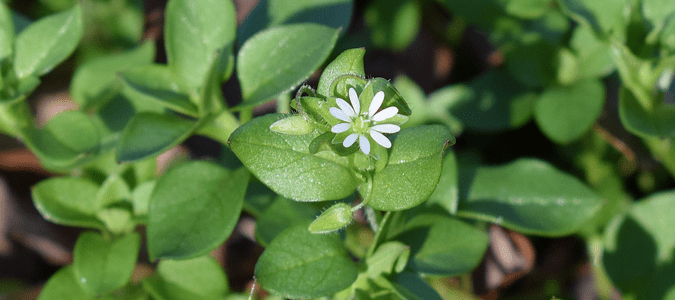
Keeping An Eye Out For Spring Weeds
Even if you’ve made all the right preparations, you may start to see different types of spring weeds sprouting in your lawn and landscaping as the weather continues to warm up. There are three primary types of spring weeds: broadleaf weeds, grass-like weeds and sedges.
Broadleaf Weeds
Broadleaf weeds are relatively easy to spot in your yard because, as their name implies, they have broader leaves than grass. Some homeowners find them pretty, as they often develop flowers. However, these plants can quickly take over your yard. Common broadleaf weeds include chickweed, henbit and dandelion.
Grass-Like Weeds
Grass-like weeds can be some of the most difficult to control because, as the name suggests, they look quite similar to grass. Unfortunately, many homeowners don’t realize they have these weeds until they are well-established. Common grass-like weeds include crabgrass, dallis grass and goose grass.
Sedges
While sedges are also commonly mistaken as grasses, these weeds start to develop blooms as they get taller. Some of the most common sedges are purple nutsedge, yellow nutsedge and annual sedge.
When it comes to weeds, the best way to prevent these bothersome plants is to have a dense, healthy lawn. Pull these weeds as you see them appear and stick to a strict lawn care schedule to provide less space for these plants to take root.
One way to make sure that your lawn stays healthy is to aerate it.
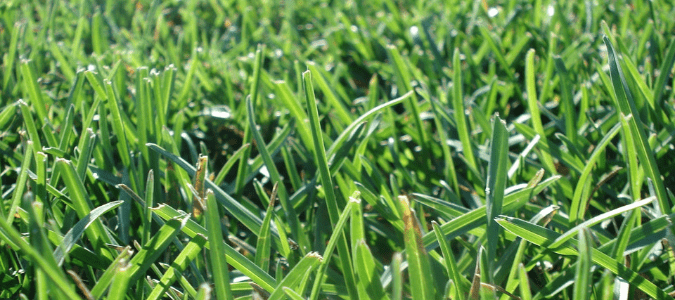
When Is The Best Time Of Year To Aerate Your Lawn?
Aerating your lawn during peak growing season allows your grass to heal from the trauma of soil plug removal. For warm-season grasses like Bermuda, buffalo and St. Augustine, this is usually in the late spring.
Aeration is the process of perforating your lawn with small holes. These holes break up compacted soil and allow air, water and nutrients to penetrate deeper to reach the roots more quickly. Aerating your lawn also produces stronger, more vigorous root systems.
You can find aeration machines for rent or purchase through gardening stores and nurseries. There are two more common aerating tools available: a spike aerator and a plug aerator. Spike aerators often resemble a fork with several tines. Plug aerators are more effective tools that actually remove a “core” or “plug” of grass from the lawn. Because these openings are 2 to 3 inches deep and up to three-quarters of an inch in diameter, they don’t fill as quickly with new soil and growth.
In many cases, between the labor of doing it yourself and purchasing or renting equipment, it can be easier to hire a lawn care team to handle lawn aeration for you.
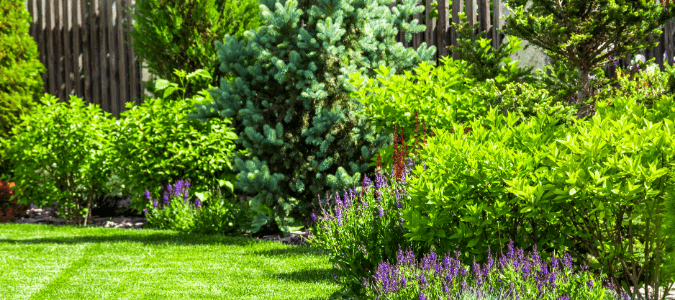
More Spring Landscaping Tips
Before you begin your actual gardening for the spring, there are several other things you can do to get ready.
Tidy Your Work Spaces
There is nothing that takes the joy out of yard work quite like not being able to find what you need, when you want it. Before spring, go into your shed or garage and straighten your tools and supplies. Spend some time now cleaning up your work tables and spaces to save time later in the season.
Take Inventory Of Tools, Supplies And Winter Damages
Cleaning your work areas will also make it easier to inventory your tools and supplies to decide what you might need to stock up on, add or replace. This is also a good time to assess the damage winter has brought to your landscaping or garden, and re-evaluating or adjusting your landscape plans.
Clean Your Mower And Other Lawn And Landscaping Equipment
You may not use your lawn care tools for some time, depending on how early you get started and whether a professional landscaping design service is involved. Either way, you’ll want your equipment in good condition when the time does come. Charge batteries, change spark plugs, replenish fluids and lubricate any tools or equipment that might benefit from some maintenance. And of course, sharpen blades and tools while you’re at it.
With all of the work that goes into getting a yard ready for spring, then trying to keep lawn green in summer heat, many homeowners find it’s often easiest to leave the work to the professionals.
ABC Can Get Your Yard Ready For Spring
Between gathering the needed equipment and products, creating a schedule and actually doing the work, there is a lot that goes into preparing your yard for spring. Instead of spending your weekend working in your yard, spend it doing things you enjoy and leave the hard work to the professionals at ABC Home & Commercial Services. We can keep your yard beautiful and your grass and plants flourishing all year round.